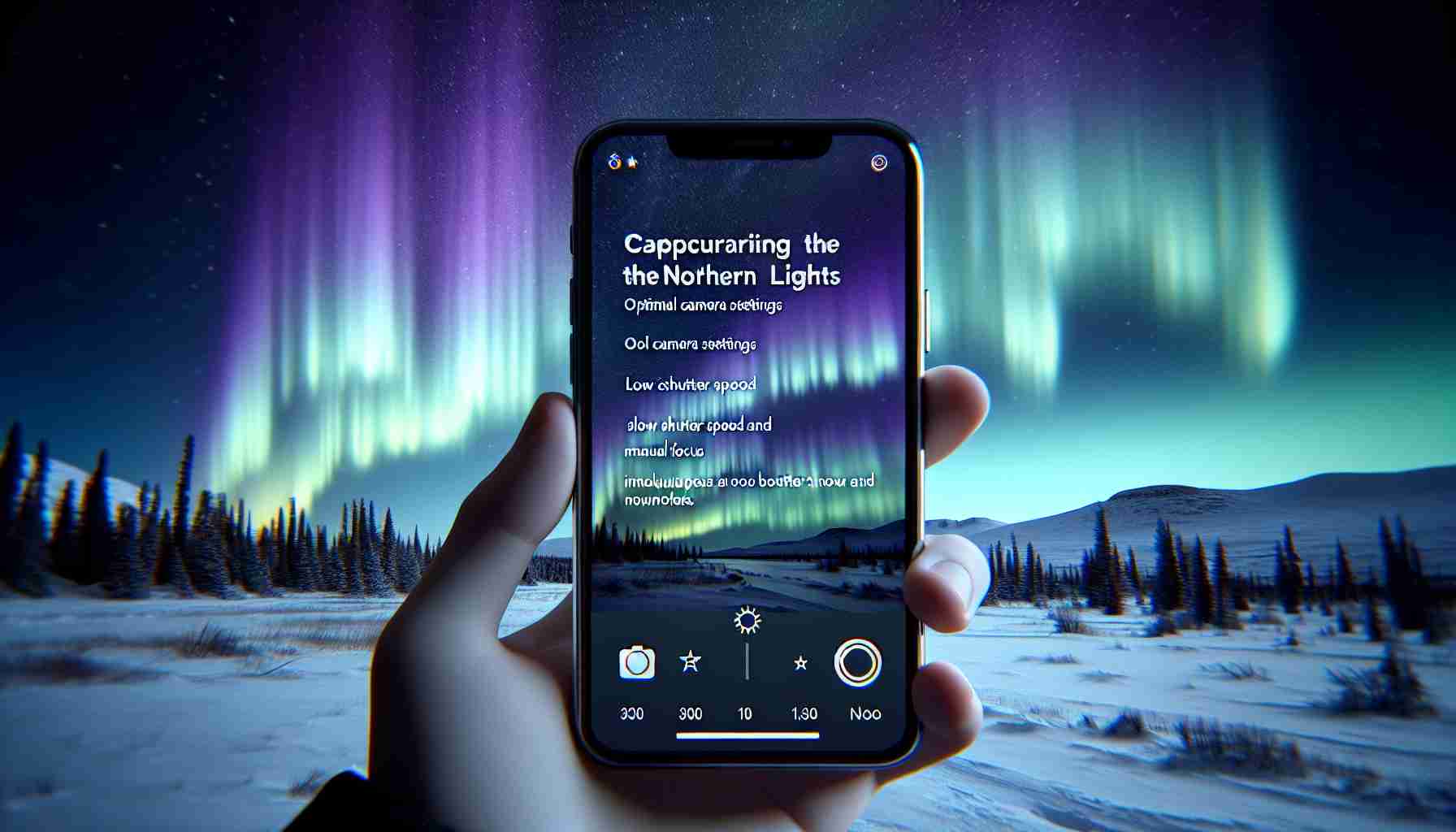Over the recent weekend, residents across numerous states experienced the stunning Aurora Borealis, painting the night sky with vibrant shades of green, blue, and purple. This celestial phenomenon is the result of electrons stimulating molecules in Earth’s high atmosphere, which then emit light as they return to a lower energy state, much like neon signage operates.
Witnessing the aurora is breathtaking, and many people turn to their smartphones to immortalize the moment. Modern smartphones are surprisingly adept at capturing low-light spectacles, sometimes producing photos that rival the live view. For iPhone users, the built-in night mode can be particularly effective. It automatically activates in dim conditions and tends to outperform even long-exposure shots.
According to technological insights, the iPhone’s night mode works by merging several snapshots to diminish noise and correct visual distortions, creating a singular, optimized image. Samsung similarly boasts a night mode that integrates 30 frames for a vibrant, clear photo, harnessing the additional light the camera sensor collects.
For Android devices, night mode relies on artificial intelligence to scrutinize and adjust settings for the anticipated scene. To engage in extended night photography with an iPhone, access the feature by tapping the night mode icon and selecting Max to lengthen the exposure time.
However, not all situations benefit from smart tech’s automation. High-speed auroras may require manual intervention, where a dedicated camera app with long exposure capabilities can be more suitable.
For the photography enthusiast, websites like Visit Iceland suggest utilizing a sturdy tripod for stability during long exposures—a must when shooting in low-light conditions. They recommend disabling flash and ensuring manual focus is set, as autofocus may struggle in the dark.
When photographing the night sky’s splendor, harnessing your smartphone’s capabilities can yield stunning results. Nonetheless, for a comprehensive capture, consider snapping a panoramic or including a silhouetted figure against the Northern Lights, adding a personal touch to the grand natural show.
Understanding the Challenges of Capturing the Northern Lights with a Smartphone
Capturing the Northern Lights, or Aurora Borealis, with a smartphone comes with unique challenges. While advanced smartphone cameras have made it more accessible to capture low-light phenomena, there are key considerations and potential obstacles photographers should be aware of:
1. Camera Sensor Limitations: Even with night mode, smartphone sensors are smaller than those in DSLR or mirrorless cameras, which can limit the amount of light captured and affect image quality.
2. Stabilization: Handheld shots of the Northern Lights can result in blurry images due to the long exposure times needed. Without a tripod, capturing sharp images can be a challenge.
3. Battery Drain: Cold weather can reduce battery life significantly, which is a common issue when photographing the Northern Lights. Bringing a portable charger can be critical.
4. App Overheads: While native camera apps are improving, sometimes a third-party app that offers more manual control can provide better results, though this can add complexity for the user.
5. Editing and Post-processing: Capturing the lights is one task, but editing the photos to accurately portray the aurora’s magnificence can be another challenge altogether if the smartphone’s built-in editing features are limited.
Questions and Answers
Q: What camera settings are best for photographing the Northern Lights with a smartphone?
A: Use night mode when available, increase exposure time, set ISO to a moderate level to reduce noise, and use manual focus to ensure the lights are sharp. Use a third-party camera app for more manual controls if necessary.
Q: Can smartphones really capture the Northern Lights effectively?
A: Yes, modern smartphones with advanced camera technology and night mode capabilities can capture the Northern Lights, though the results may not be as detailed or noise-free as images taken with professional gear.
Key Advantages and Disadvantages of Smartphone Photography for Northern Lights
Advantages:
– Portability: Smartphones are easy to carry and always with you.
– Improving Technology: Night modes and AI enhancements are constantly evolving to produce better low-light images.
– Shareability: Instantly share your captures through social media or messaging.
Disadvantages:
– Image Quality: Lower than that of dedicated cameras due to sensor size and processing limitations.
– Functionality: Fewer manual controls than DSLR or mirrorless cameras, which can restrict creative opportunities.
– Battery Life: Smartphones can have their battery quickly depleted in cold conditions, which often accompany Northern Lights sightings.
For more information and tips on photographing the Northern Lights, photographers can visit the main websites providing insights and resources on photography and travel destinations known for aurora sightings, such as Visit Iceland at Visit Iceland. Additional educational content and community support can be found on major photography portals like National Geographic at National Geographic. However, always ensure that URLs are up-to-date and valid before visiting them.
